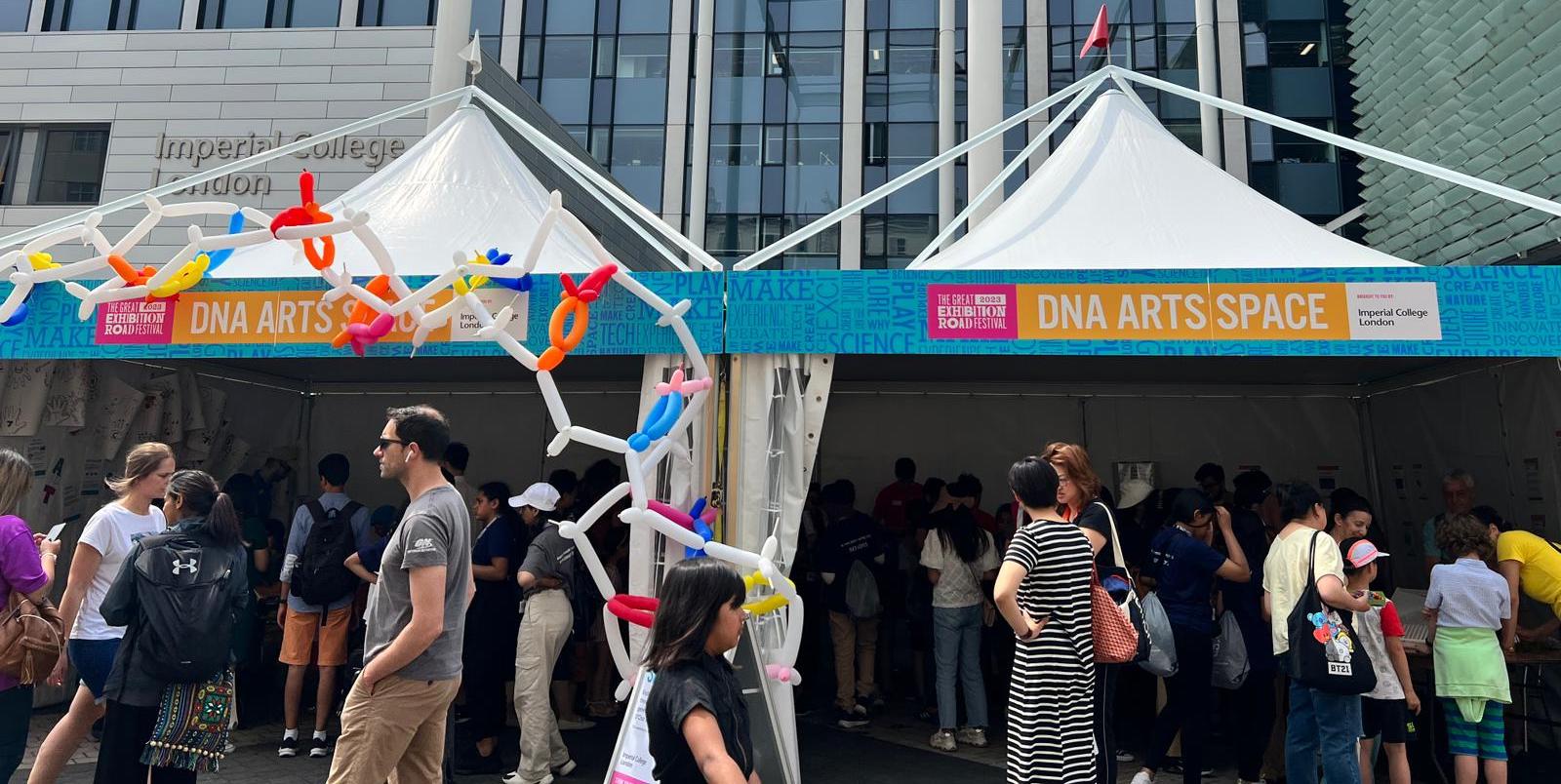Great Exhibition Road Festival - DNA Arts Space
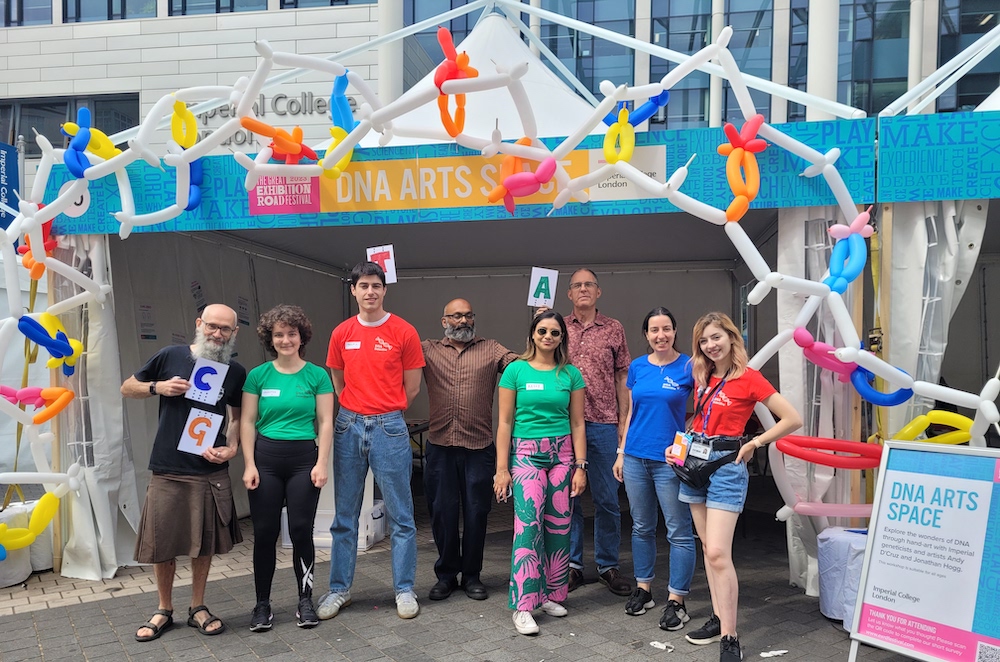
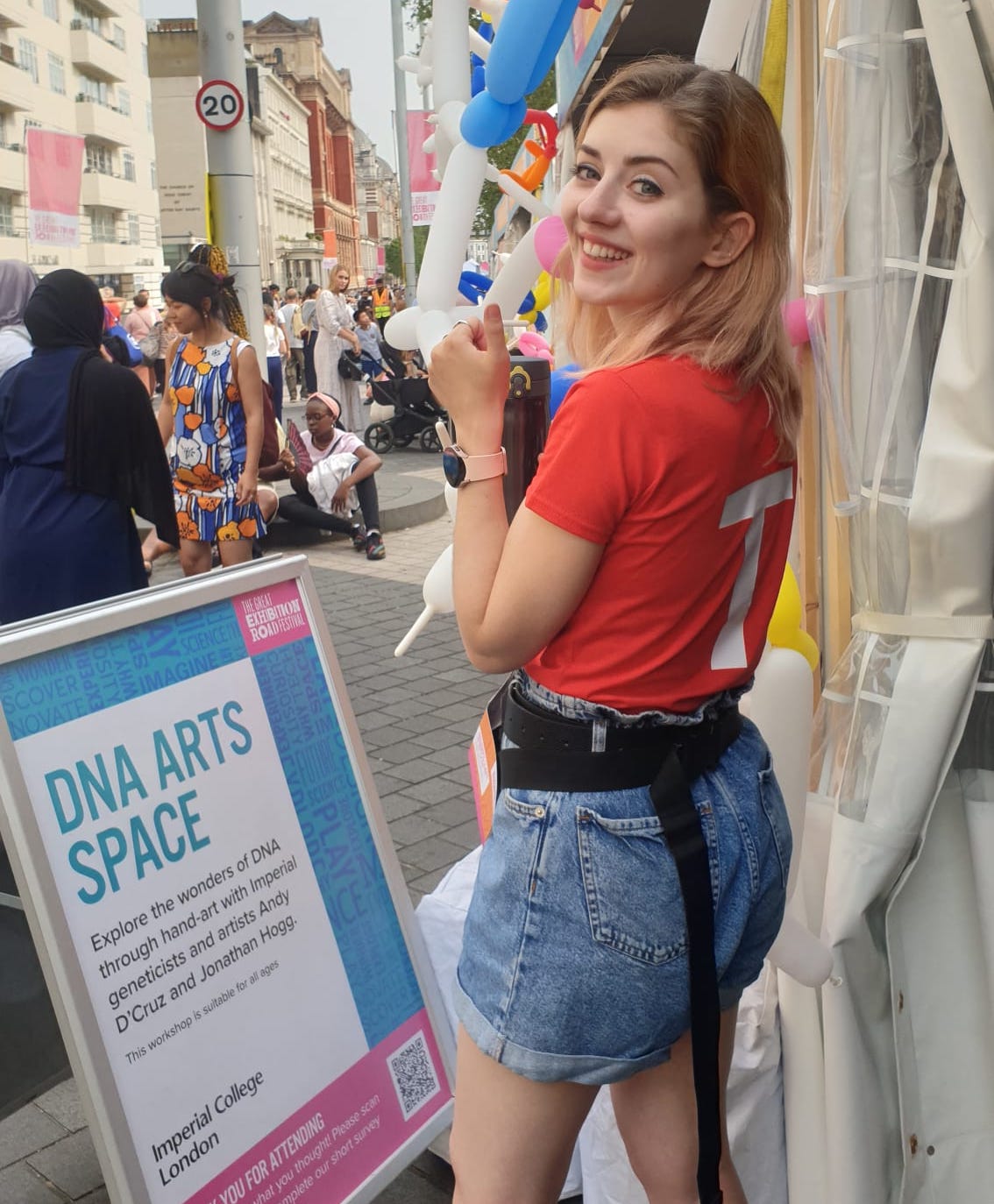 Staff and students from MDR's Section of Genetics & Genomics ran the DNA Arts Space at the 2023 Great Exhibition Road Festival, together with artists Andy D’Cruz and Jonathan Hogg. This activity was funded by a Genetics Society public engagement grant, awarded to Dr Hannah Maude, a Research Associate in the Section. Hannah answered a few questions about the event and the activity as part of an interview with the Genetics Society Magazine:
Staff and students from MDR's Section of Genetics & Genomics ran the DNA Arts Space at the 2023 Great Exhibition Road Festival, together with artists Andy D’Cruz and Jonathan Hogg. This activity was funded by a Genetics Society public engagement grant, awarded to Dr Hannah Maude, a Research Associate in the Section. Hannah answered a few questions about the event and the activity as part of an interview with the Genetics Society Magazine:
What is the Great Exhibition Road Festival?
The festival is a free and open annual celebration of science and the arts, centred in South Kensington in the area nicknamed Albertropolis. The area houses London’s Museum quarter, which was born from the original Great Exhibition in 1851. The revamped festival has run since 2019 and brings together partner institutions including Imperial College, the Museums and others. This year’s theme was “Awe & Wonder” and saw an estimated 50-55,000 attendees.
Tell us about the DNA Arts Space
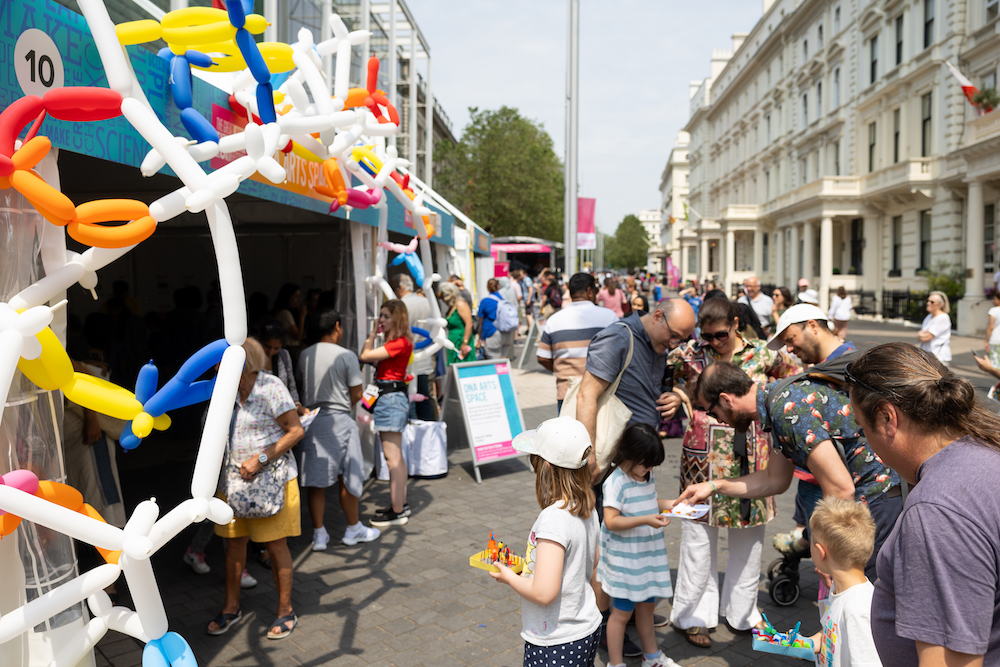 For this year’s festival, we were allocated a premium spot, a marquee on Exhibition Road right outside the Imperial College's main entrance! We were paired with artists Andy D’Cruz and Jonathan Hogg to create a space that celebrated the themes of the festival: science, art and awe & wonder. We were delighted with the collaboration and loved Andy & Jonathan’s balloon DNA helix!
For this year’s festival, we were allocated a premium spot, a marquee on Exhibition Road right outside the Imperial College's main entrance! We were paired with artists Andy D’Cruz and Jonathan Hogg to create a space that celebrated the themes of the festival: science, art and awe & wonder. We were delighted with the collaboration and loved Andy & Jonathan’s balloon DNA helix!
Visitors learned about the structure of DNA, how it is inherited in families, how it replicates… all the way to its relevance in modern healthcare. The brief was to explore the awe & wonder of DNA, the four-letter language that creates all life on Earth. What could be more awesome!?
What activities did you run?
The marquee featured a DNA hand art mural, gummy bear pedigrees, custom-made DNA race and a “Genetic Lottery” Galton board, as well as supertaster strips, and a series of posters including health headlines, fake news and genetic traits.
How many visitors did you have?
Over two days our handprint mural reached 674 handprints; it covered half our marquee! We also made 550 gummy bear pedigrees and used 400 supertaster strips. It was an intense but successful two days, which is all down to the 15 volunteers who gave up their weekends. Shout out to our MSc students and alumni for volunteering their time.
Tell us more about the activities. Did everything go smoothly?
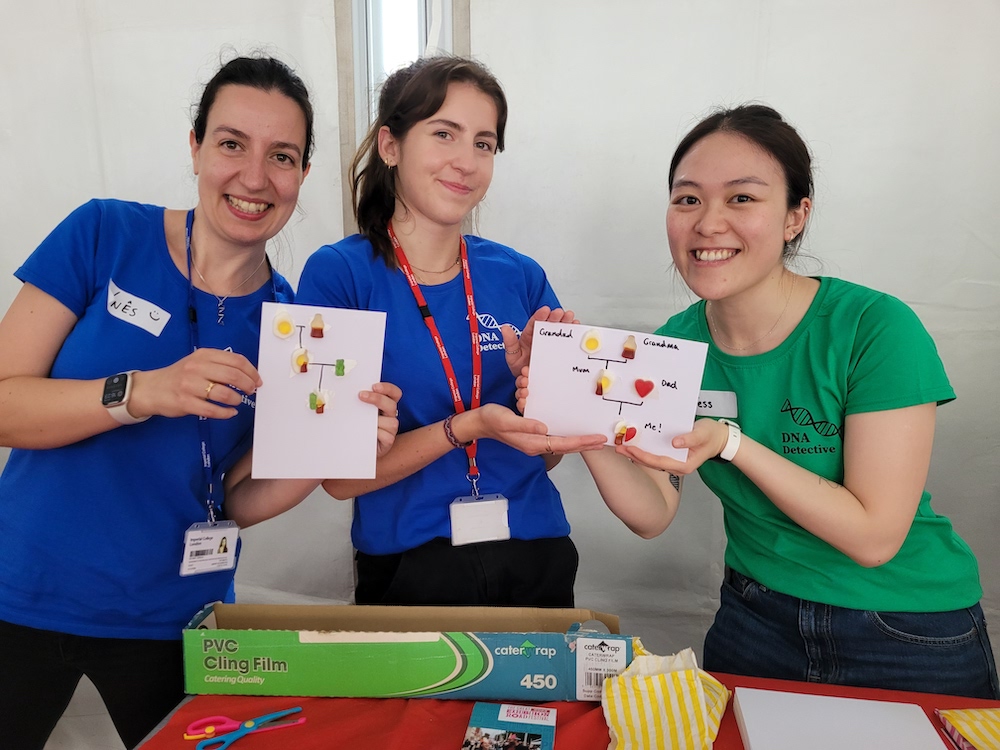 Visitors were invited to draw around their hand to contribute to a growing antiparallel strand of A, T, C and G (with a backbone of thumbs!), and write unique traits prompted by our wall of “genetic trait” posters. The creativity was amazing, all the designs were so unique.
Visitors were invited to draw around their hand to contribute to a growing antiparallel strand of A, T, C and G (with a backbone of thumbs!), and write unique traits prompted by our wall of “genetic trait” posters. The creativity was amazing, all the designs were so unique.
The gummy bear pedigrees turned out to be super popular with the kids, no surprises there. I’ll always remember the 9kg of gummy bears arriving in the office, and the transition on Sunday, after running out of bears, to haribo pedigrees. Who identifies as half egg, half cola bottle?!
Our DNA race featured 3D-printed DNA bases and, although nobody quite reached the DNA polymerases copy rate of 50 bases per second, we had some fast contenders.
The last activity was a custom-built Galton board, which we used to explain the concepts of polygenic traits and the “Genetic Lottery”. This calls for a special thanks to my Dad, who dedicated his evenings and weekends over a few months to help me design and build the board. It was a real hit, thank you!
Content: This content was adapted from an interview in Issue 89 of the Genetics Society Magazine.
Photos: Dan Weill Photography
